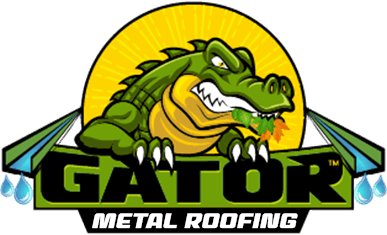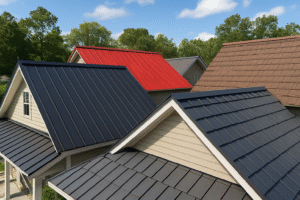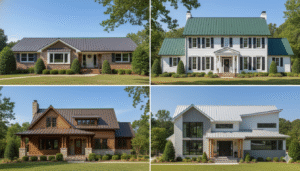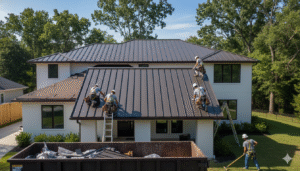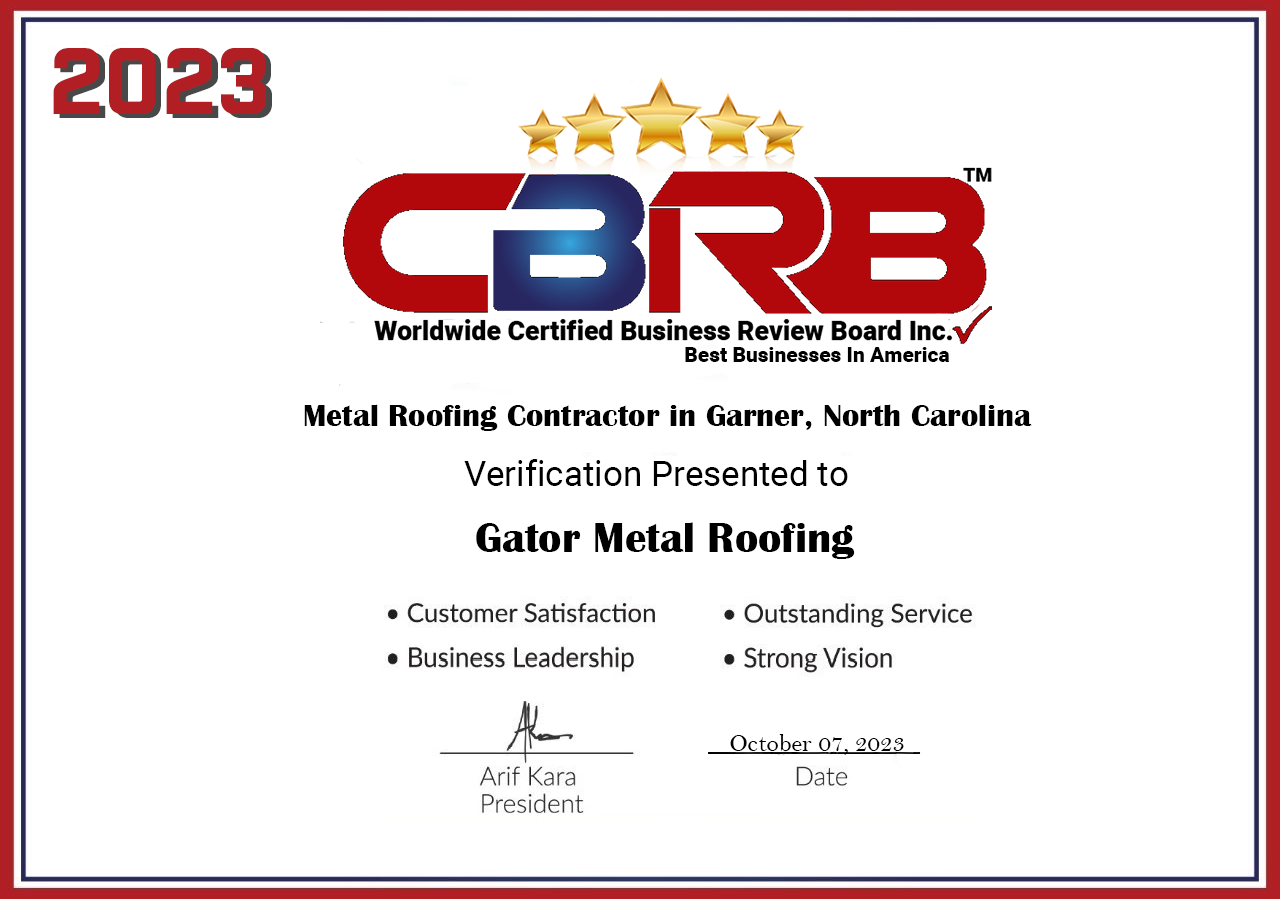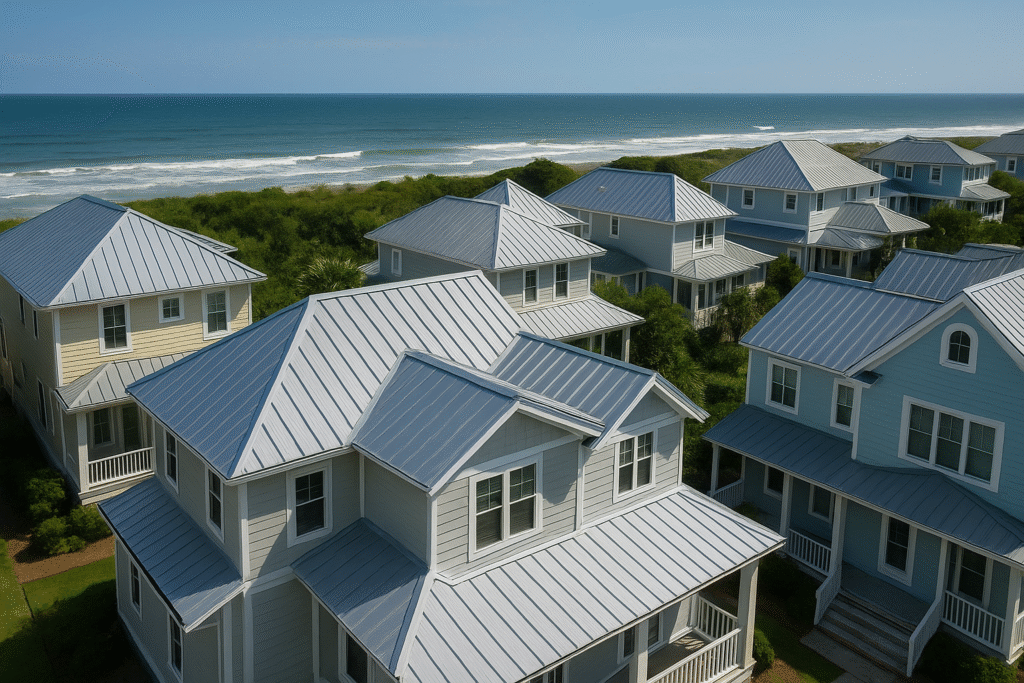
For homeowners living along the coast, few decisions are as important as choosing the right roof. From relentless salt air and high winds to intense UV exposure and heavy rains, coastal homes endure some of the harshest environmental conditions. Traditional roofing materials like asphalt shingles or wood shakes often struggle to stand up to these elements for long. That’s why more and more coastal homeowners are turning to metal roofing—a durable, beautiful, and energy-efficient solution built to last.
Built for Coastal Conditions
Coastal weather is tough on homes. High humidity, salty air, and strong storms can quickly wear down traditional roofs. Asphalt shingles can curl, crack, or lose granules, and wooden roofs are prone to rot and mold growth. Metal roofing, however, is specifically engineered to handle these challenges.
Modern metal roofs are constructed from galvanized or aluminum-coated steel, zinc, or aluminum—materials that are highly resistant to corrosion. Advanced paint systems and protective coatings provide an additional layer of defense against the salt air and moisture that cause rust and decay. This durability means that metal roofs can maintain their strength and appearance for 50 years or more, far exceeding the lifespan of other roofing types.
When hurricanes or tropical storms sweep through the coast, homeowners with metal roofs have added peace of mind. Metal panels are designed to withstand wind speeds up to 140 mph or more when properly installed, making them one of the most storm-resistant roofing options available.
A Smart Investment in Energy Efficiency
Coastal climates tend to be warm and sunny for much of the year. Metal roofing reflects a large portion of solar radiation instead of absorbing it, helping to keep homes cooler and reduce the demand on air conditioning systems. In fact, ENERGY STAR®-certified metal roofs can cut cooling costs by up to 25%, depending on the color and finish.
Many coastal homeowners are also drawn to metal roofs for their sustainability. Unlike asphalt shingles, which end up in landfills after about 20 years, most metal roofing is made from recycled materials and can be fully recycled at the end of its long life. For eco-conscious residents who care about protecting their local environment and waterways, metal roofing is a clear winner.
Low Maintenance, Long-Term Value
One of the biggest frustrations for coastal homeowners is the constant maintenance required to protect their properties from the elements. With traditional roofs, it’s common to see cracked shingles, water leaks, or algae growth that requires frequent cleaning and repair.
Metal roofing, by contrast, requires very little upkeep. The smooth surface resists the growth of mold, mildew, and algae that thrive in humid coastal environments. A simple rinse with fresh water a few times a year is typically all that’s needed to keep the roof looking like new.
While the upfront cost of a metal roof is higher than asphalt shingles, the long-term savings are significant. With its decades-long lifespan, lower maintenance needs, and energy efficiency, a metal roof often pays for itself over time. Homeowners can also enjoy added value when selling their homes—metal roofing is often seen as a premium feature that enhances curb appeal and resale value.
Beauty Meets Versatility
Gone are the days when metal roofs were limited to industrial or farmhouse styles. Today’s metal roofing systems come in a wide variety of colors, finishes, and profiles, allowing homeowners to choose a look that complements their coastal architecture. Whether it’s a sleek standing seam roof for a modern beach home or a coastal-inspired metal shingle that mimics traditional slate or tile, the options are nearly endless.
The reflective coatings also help preserve the color and finish for decades, even in the intense coastal sun. Homeowners can enjoy both style and substance—a roof that enhances the home’s visual appeal while offering superior protection.
Fire and Safety Advantages
For coastal homeowners living in areas with strong winds and potential for wildfires or lightning strikes, safety is another major reason to go metal. Metal roofing is non-combustible, meaning it won’t ignite or contribute to the spread of fire. This added layer of safety can reduce insurance premiums and provide greater peace of mind in severe weather conditions.
Designed for the Future
More coastal homeowners today are thinking long-term. They’re looking for materials that protect their investment, reduce maintenance, and support sustainable living. Metal roofing checks all those boxes. It’s a future-proof solution—ready to handle the challenges of a changing climate and increasing storm activity.
In many coastal communities, local building codes are beginning to recognize the advantages of metal roofing, and some insurance companies even offer discounts for homes that use it. This trend is expected to continue as more homeowners experience firsthand the performance and durability that metal roofing provides.
Final Thoughts
From Wrightsville Beach to Myrtle Beach and beyond, homeowners across the coast are discovering the lasting benefits of metal roofing. It’s not just about withstanding storms—it’s about enhancing comfort, efficiency, and value for decades to come.
When you invest in a metal roof, you’re investing in protection that stands up to coastal living’s toughest challenges while elevating your home’s beauty and sustainability. For coastal homeowners who want peace of mind and long-term savings, metal roofing isn’t just a smart choice—it’s the coastal standard of the future.
